Autumn Fern, Japanese Wood Fern, Copper Shield Fern, Japanese Shield Fern
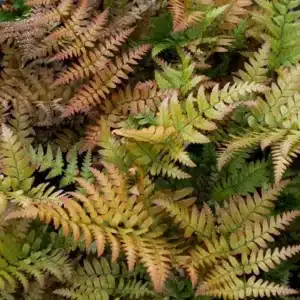
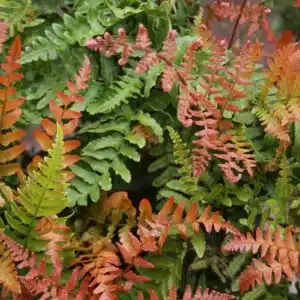

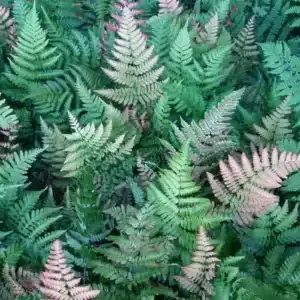
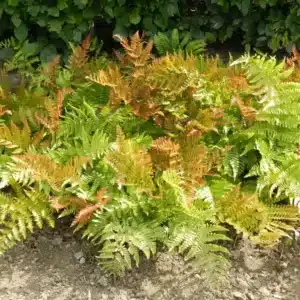
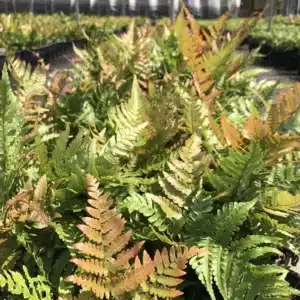
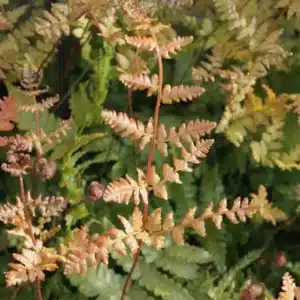
Plant in a shady area, in moist humous soil. It can withstand drought after established but does better when it gets plenty of water. It spreads by underground stems and is easy to divide by simply digging up a portion of the plant and placing elsewhere.
Water deeply and regularly the first growing season to develop a strong root system.
Fertilize monthly with a slow release organic fertilizer. Responds well to compost.
Trim off dead fronds to keep the plant looking nice, otherwise, no pruning required.
Can occasionally suffer from nematodes or pythium root rot. The foilage will turn gray and wilt with either of these. In some parts of the country Florida fern caterpillars can be a problem. Also there are sometimes worms that can be treated with ordinary roach spray.














